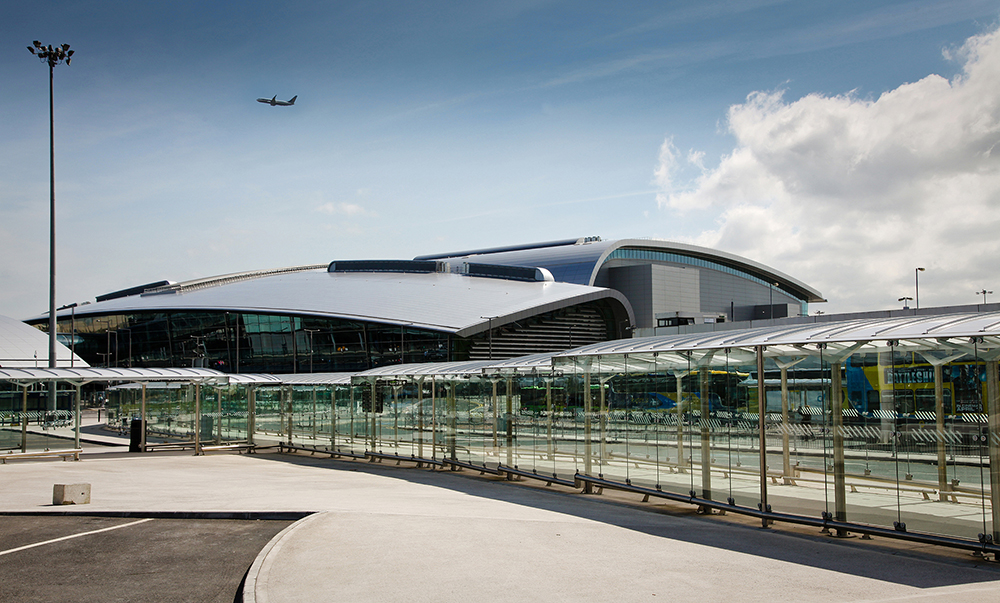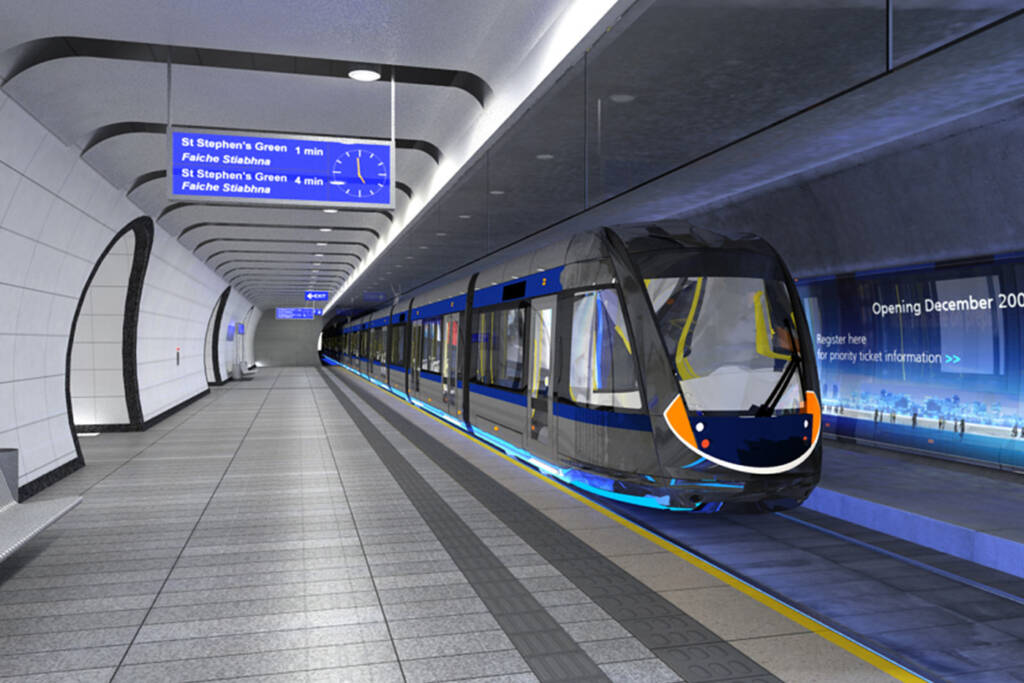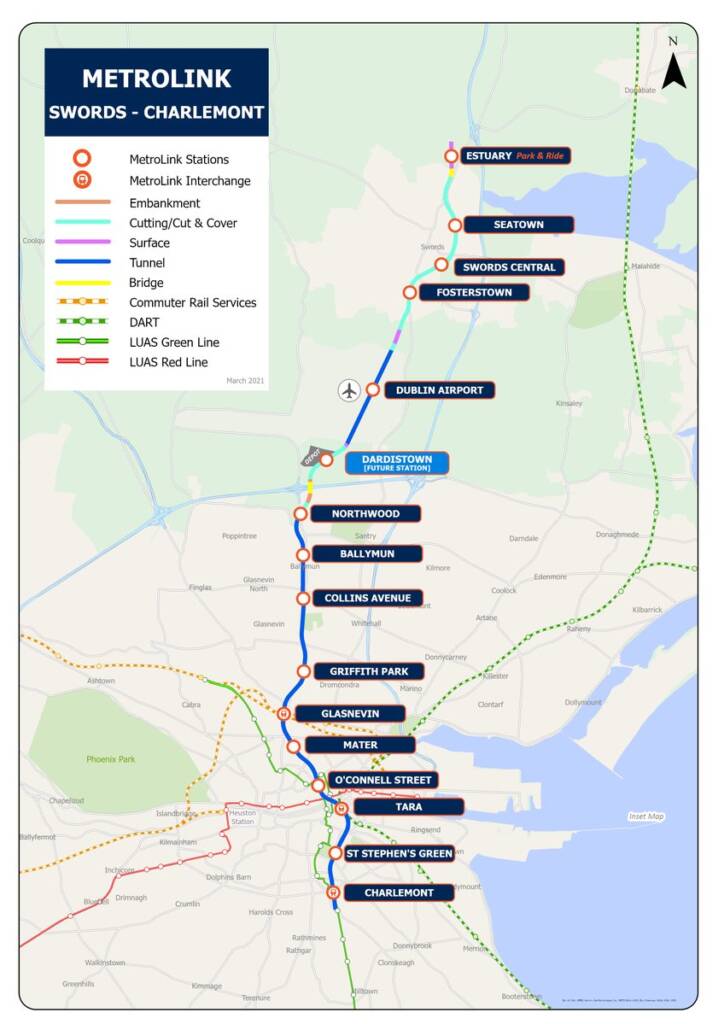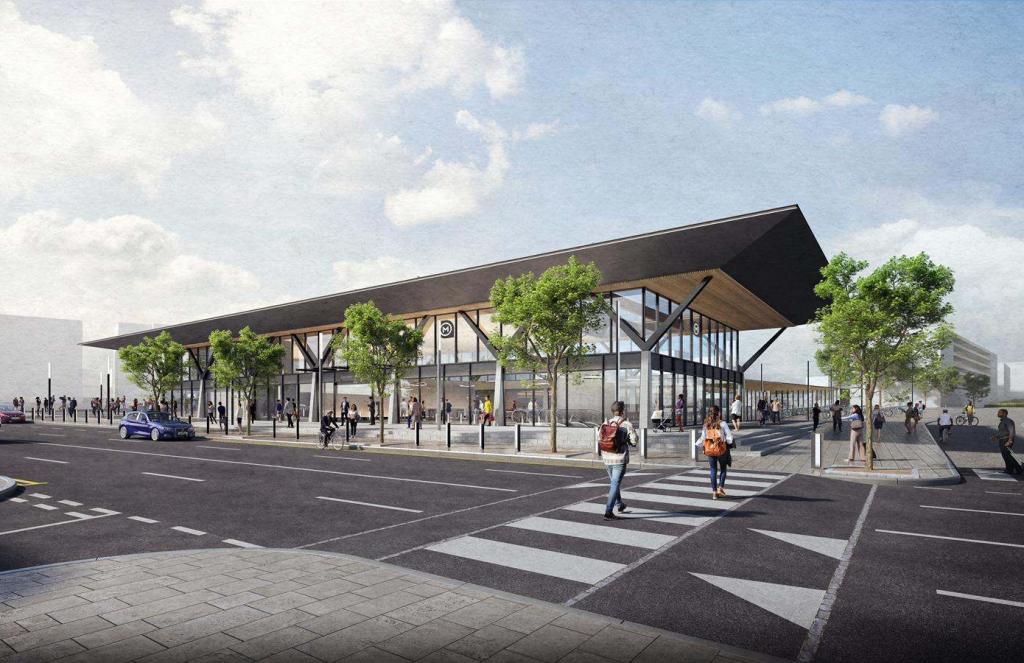The Dublin Airport Metro, an integral part of the MetroLink project, has long been envisioned as a transformative development in the city’s public transport infrastructure. Designed to link Dublin’s city center with Dublin Airport, this metro line is aimed at reducing road congestion and improving sustainable transit options. However, despite the enthusiasm surrounding the project, its progress has faced significant hurdles, from planning delays to opposition from local groups.
Planning Permissions and Delays
As of 2024, the Dublin Airport Metro has made progress in securing critical planning permissions, though not without obstacles. In early 2024, the Dublin Airport Authority (DAA) expressed its strong support for the project, emphasizing its importance in handling the growing number of passengers and improving connectivity. The project aligns with Dublin’s overall strategy to reduce road traffic and promote public transportation. Despite this, opposition remains, particularly regarding the allocation of just one of the 16 planned stations to Dublin Airport itself. Critics argue that the metro’s focus on the airport might divert attention from broader transit needs across the city .

The project has had to adapt to stringent environmental regulations and community concerns, which have led to multiple revisions of the original proposal. Dublin City Council has supported the metro, but final approval required adjustments to minimize environmental impact, especially for the tunneling and construction phases. The design needed to ensure the preservation of surrounding areas, particularly in neighborhoods that would experience construction activity.
Construction Program and Technical Challenges
The construction program for the Dublin Airport Metro is set to be extensive, with construction scheduled to begin in late 2024. The planned route spans 19 kilometers, most of it underground, making it one of the most complex infrastructure projects in recent Irish history. The construction will involve large-scale tunneling beneath highly populated areas, requiring precise engineering to mitigate any risks to existing buildings and roadways. Significant work will also focus on the airport’s station, which will be the metro’s most critical hub .

A sleek, modern underground metro station with digital signage indicating the Dublin Airport Metro line, showcasing the vision for efficient, sustainable transport.
Due to these complexities, the expected operational date has been pushed back several times. Initial forecasts hoped the metro could be running by 2027, but current estimates suggest that 2028-2031 is a more realistic target. This extended timeline accounts for both the technical challenges and the bureaucratic delays that have stalled the project since its inception .
Design Program and Future Prospects
One of the standout features of the Dublin Airport Metro will be its sustainable design. The metro will be fully automated, reducing the need for human intervention and allowing for increased frequency during peak hours. Dublin’s MetroLink is also designed with environmental sustainability in mind, using energy-efficient systems to minimize carbon emissions and promote greener public transport. The incorporation of state-of-the-art BIM (Building Information Modeling) technology will ensure better design accuracy and project management during construction.

A map of the MetroLink line from Swords to Charlemont, featuring key stations, including the critical Dublin Airport stop.
Additionally, the station at Dublin Airport will be designed to integrate seamlessly with the city’s existing transport infrastructure, including bus networks and the Luas tram system. This station will be central to improving the airport’s connectivity with the rest of Dublin, reducing the reliance on private vehicles for airport-bound passengers. The station’s design focuses on accessibility and user-friendliness, enhancing passenger experience while maintaining efficient traffic flow .
Expected Operation and Long-Term Benefits
Once operational, the Dublin Airport Metro will significantly reduce the travel time between Dublin’s city center and the airport to just 20 minutes. It will provide much-needed relief from the congestion that frequently plagues the M50 motorway, one of the city’s busiest roads. The project is expected to attract an estimated 175,000 passengers daily once completed .

A modern, open-plan station rendering showing the future Glasnevin Station, one of the major stops on the Dublin MetroLink route.
This development will also play a pivotal role in achieving Ireland’s environmental targets, particularly its commitments under the EU’s climate action plan. By reducing the number of cars on the road, the metro will help lower CO2 emissions in the city. Its role in Dublin’s broader transportation strategy, combined with its environmental benefits, makes it a crucial part of the city’s future .
Final Thoughts
Despite the delays and ongoing challenges, the Dublin Airport Metro holds great potential for transforming the city’s public transport infrastructure. With construction expected to ramp up later this year, the project is inching closer to realizing its vision of providing efficient, sustainable transit to Dublin’s residents and visitors. As Dublin prepares for its future, this metro line will become a critical asset in reducing road congestion, promoting sustainability, and modernizing the city’s transport network.


